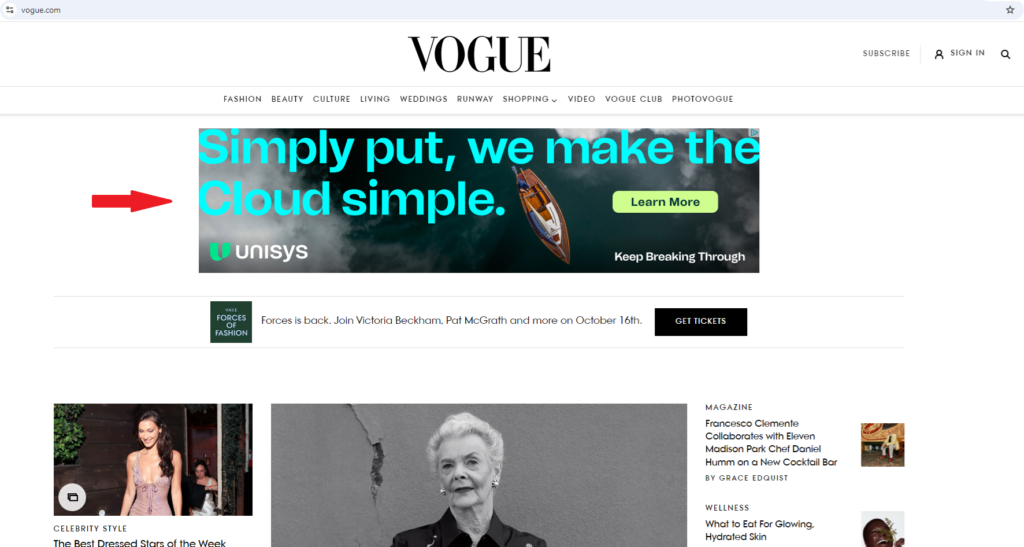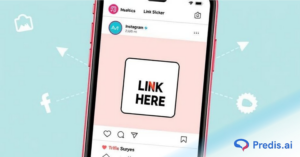If you check online, you will find that digital advertising has been around for three decades now. Within this short period, it has become an integral part of the marketing landscape.
What’s interesting to note is that digital advertising has come a long way since its initial days. Today, it has become extremely diverse. You can choose from multiple ad formats to reach your target audience.
Display ads and search ads are two such formats. While they are distinct ad formats, both are effective for driving sales.
So, which ad format is the best for expanding your business reach?
Choosing the right advertising format is essential for the success of your marketing plan. If you fail to do so, your business may not get the best return on investment (ROI).
This is where knowing about search ads vs display ads can make all the difference.
In this blog, we compare display ads with search ads in detail to help you make an informed decision and improve your marketing game plan and sales drive.
What Are Display Ads?
You must have seen display ads when browsing different sites online, even though you may not have realized it. When you visit a website and see an ad promoting a third-party product, it is a display ad.
So, display ads refer to ads that enable you to showcase your product or service on different websites and online platforms. You can use images, text, or videos to display advertising and get your message across.
Here’s an example of display advertising on a website.

Display advertising is great for building awareness about your business. Using this ad format, you can reach a broader audience or concentrate on a niche market. If you want to engage a niche market, you can customize your display ads to show up for distinct groups of site visitors based on their browsing history and preferences.
In display advertising, you can encourage users to engage with your ad and take specific action. For example, you can ask them to visit a landing page, download a document, make a purchase, etc.
What Are Search Ads?
Have you ever noticed that when you search for something on Google, you get a results page that displays both organic and sponsored results? The sponsored results are search ads.
As the name indicates, search ads are displayed when you use a search engine to look for something online.
So, search advertising refers to a marketing technique in which you place your ads on search engine results pages (SERP). You must pay a small fee every time a user clicks on your ad displayed on the SERP.
Here, we have an example of search ads displayed on Google search results.

Search ads are useful for capturing users’ search intent. When you gain insights about the search intent, you can target specific user segments by bidding on specific keywords.
Search ads can be displayed in various ways on a SERP. However, search engines specify which results are sponsored and which aren’t to help users understand the difference.
For instance, Google uses the word ‘Sponsored’ to distinguish search ads from organic results. Search ads usually appear at the top and bottom of SERPs in Google.

Display Ads Vs. Search Ads: Explore the Pros and Cons
The choice between search ads vs display ads can depend on several factors, such as your advertising objectives, target audience, budget, etc.
Understanding the pros and cons of both ad formats will help you decide which is best for your business.
Pros of Search Ads
1. Ads Have High-Intent Reach: Search ads allow you to display your business or brand to potential consumers.
Since it is a keyword-based marketing strategy, you can customize it for better results. This maximizes the chances of your products getting purchased by your target audience.
2. Offers Immediate Results: When a person runs a query relevant to your business, they will see your search ads first in the SERP. This offers multiple advantages, like increasing your brand awareness.
Besides, since the consumer is looking for a solution, your business’s chances of conversions increase, which can result in a higher ROI.
3. Boosts Traffic: If your website ranks high on SERP, investing in search ads can boost traffic.
Now, suppose you have a startup, and your website is yet to rank for the targeted SEO keywords. You can adapt search ads to build your online presence and increase your reach.
4. Provides Metric Insights: When you opt for paid search ads, you can access detailed metrics such as conversion rates and click-through rates (CTRs).
By analyzing the metrics of your ad campaign, you can finetune it for better performance.
5. Control over Marketing Budget: With search ads, you can control your marketing budget.
You don’t have to commit any minimum amount when you opt for a search ad campaign.
Cons of Search Ads
1. Creative Limitation: Search ads are primarily text-based, which limits the use of creative visuals to attract consumers.
In today’s digital era, visual content often plays a crucial role in engaging the targeted audience, so this may impact the click rates.
2. No Cross-Platform Ad Sharing: Search ads don’t enjoy the benefit of social media sharing. Since you can’t share the ads across online platforms, it limits visibility and reach.
3. Keyword Competition: Choosing the right keywords is essential for the success of your search ads. You can use SE Ranking to identify high-performing keywords while keeping an eye on competition and cost trends.
However, due to enhanced demand, the cost-per-click (CPC) value of popular search terms can be quite high. This can increase keyword competition and make top ad positions expensive for your marketing campaign.
4. Need for Optimization: To remain ahead, you must adjust and update your keywords, ad copy, and bids. The pressure of continuous optimization can be challenging and time-consuming.
5. Reach Depends on Search: Your search ads show up only when a consumer inputs a query with specific keywords.
This limits the visibility of your products to consumers who are aware of similar businesses and may not run any queries.
Pros of Display Ads
1. Enhances Brand Awareness: Display ads enable you to reach a broader audience. This introduces your brand to them before they search for the product or service you provide. By increasing your brand awareness, you enhance the chance of getting the business when these people need your product or service.
2. Creates Visual Engagement: With display ads, you can design your brand message using audio, videos, images, texts, and rich media elements. This helps you attract the attention of potential customers and effectively communicate your point.
3. Reach Customers at Every Stage: Display ads help you reach potential customers at all stages of the decision-making procedure. Implementing a well-thought-out ad campaign can increase conversion chances.
4. Ensures Targeted Reach: Display ads are game-changing because they enable you to target users based on specific demographics, behaviors, locations, etc.
You can even use this ad format to display your ads on specific websites. The advantage is that you can focus your marketing budget on audiences most likely to convert.
5. Provides Value for Money: The number of people who click display ads is relatively less. As such, the cost per impression is low for this ad format, even though it helps you to reach a large segment of your target market.
You can set your advertising budget based on your need. The dual benefits of budget flexibility and efficient targeting make display ads quite affordable.
Cons of Display Ads
1. Risk of Banner Blindness: The enhanced frequency and intrusiveness of display ads can cause users to ignore them subconsciously. Over-advertising can even lead to users applying ad-blocking software to avoid seeing the ads. This can reduce their impact. For instance, users concerned about online privacy might employ a trusted VPN to enhance their security, which can also affect how ads are served and viewed.
2. Minimal Length: Display ads require you to deliver your message quickly and efficiently. You usually have 10 to 15 seconds to convey your message in a limited space, which can limit the information you want to convey.
3. Lower Direct Engagement: When you opt for display ads, you show them to people not actively seeking your products or services.
So, the click-through rate for such ads is relatively low. For instance, banner ads have an average click-through rate of around 0.1%, which can lead to low conversions.

Display Ads Vs. Search Ads: Know the Differences
Display ads and search ads differ in various ways. The main difference is that search ads signify pull advertising, while display ads reflect push advertising.
Pull advertising means your search ads will be displayed to only those users whose search intent matches your products or services. In other words, the users are already searching for your products or services.
Push advertising means your ads will be displayed at paid placements. They will show up based on several targeting parameters.
Comparing the other aspects will enable you to understand how these two advertising formats vary.
1. Average Clickthrough Rate
The clickthrough rate (CTR) indicates how often users click your ads in comparison to how many times the ad is shown.
The average CTR for Google display ads across industries is 0.46%, and for search ads, it is 3.17%.
The reason behind the conversion rate of search ads is that these ads are shown to people actively seeking information about the product or service. So they are more likely to convert. However, this isn’t the case for display ads shown to people when they are engaged in doing something else.
2. Average Cost-Per-Click
The cost-per-click (CPC) rate refers to the money you spend when someone clicks on your ad.
The CPC for Google display ads is $0.63, while for Google search ads is $2.69.
3. Purpose
Search advertising campaigns help to capture users in the research process. This ad format is ideal for offering your products or services as a solution to meet immediate user needs.
Display advertising campaigns help create demand for your products or services among online users. This is in contrast to search ads, which answer a demand for a particular business or product.
So, while search ads enable you to capitalize on a need that already exists, display ads allow you to cultivate a feeling of need or want in users.
4. Brand Awareness and Leads
Display ads are effective for building brand recognition and awareness. This ad format is great for creating first impressions and gaining exposure for your business.
Search ads enable you to locate quality leads searching for particular products or services. If your business can offer them the solution they want, such leads have a higher chance of purchasing your products or services.
5. Marketing Efforts
For display ads, you can recycle your advertising content and show it to users who have previously engaged with your business or brand. For example, suppose a user clicks on your advertisement to download a free eBook. In that case, you can show similar ads to your users in the future to offer them other downloadable materials.
In the case of search ads, they are displayed directly on search engines for users who are looking for relevant information. You can use this advertising strategy to showcase your low-ranking web pages or those with fewer clicks on the tops of SERPs. This boosts the visibility of your pages and creates an opportunity to increase organic traffic on your site.
6. Use of Visual Elements
With search ads, you face the limitation of displaying ads in a text-based format since they appear in SERPs. The main components of search ads include a headline, descriptive text, and a display URL. There are no visual elements involved in search ads.
Display ads allow the use of visual elements, allowing you to be more creative with your advertising strategy. You can design your ads in various formats, including images, graphics, videos, and audio, to capture and engage your audience.
These ads can appear on websites, social media platforms, apps, etc. You can even customize the format of your display ads (videos, animations, text, etc.) to match the website where they will be shown.
7. Advertising Cost
Running search ad campaigns can be expensive when you use high-demand keywords.
The cost of running display ad campaigns can vary based on the popularity of the website where it is featured and the industry competition.
8. Sales Cycle
Search ad campaigns work well for products or services that have a shorter sales cycle and don’t need retargeting. In other words, you don’t need to continue showing your ads to people who have already engaged with your business.
Display ad campaigns are better suited for marketing products or services that may not be purchased immediately and thus have a longer sales cycle. By using display ads, you can increase your brand’s visibility and recall value. This encourages users to keep your brand in mind when they make purchase decisions in the future.

Display Ads Vs. Search Ads: Which One to Choose for Your Business?
It’s easy to get caught up in the argument of search ads vs display ads. Here are a few pointers that can help you to make your choice.
Consider using search ads when you have the following goals:
- You want to increase the organic traffic on your business website or product landing pages.
- You aim to capture high-quality leads that can result in higher conversions and sales growth.
- Your business offers products or services that cater to a local audience or users within a particular geographical area.
- You intend to make the most of a limited budget and attain good results for your marketing efforts.
You can choose display ads when you resonate with the following:
- Your business deals with products or services that rely heavily on visual demonstration, such as home décor, entertainment, jewelry, etc.
- You aim to build awareness and establish your brand among online users with passive intent.
- Your business caters to niche audiences that spend their time on specific websites.
Create Captivating Display Ads for Enhanced Conversion
If you want the advantages of both formats for your business, you can tweak your marketing strategy. Using display and search ads can mean a win-win position for your business.
When you want to implement a robust display ads strategy, ensure your ads are compelling enough to attract immediate attention. You will need to design ad creatives and highly converting ad copies.
Does this sound like a challenging task? Well, you don’t have to worry. Now, you can use the Predis.ai tool to create compelling product ads and captivate your audience. With Predis.ai’s Google display ads maker you can create stunning video ad copies and boost your marketing campaign!
Sign up for your free account today and explore this tool to generate highly converting display ads!
Related Content,
A Complete Guide on Dynamic Display Ads
How to Write a CTA for Your Display Ads?















